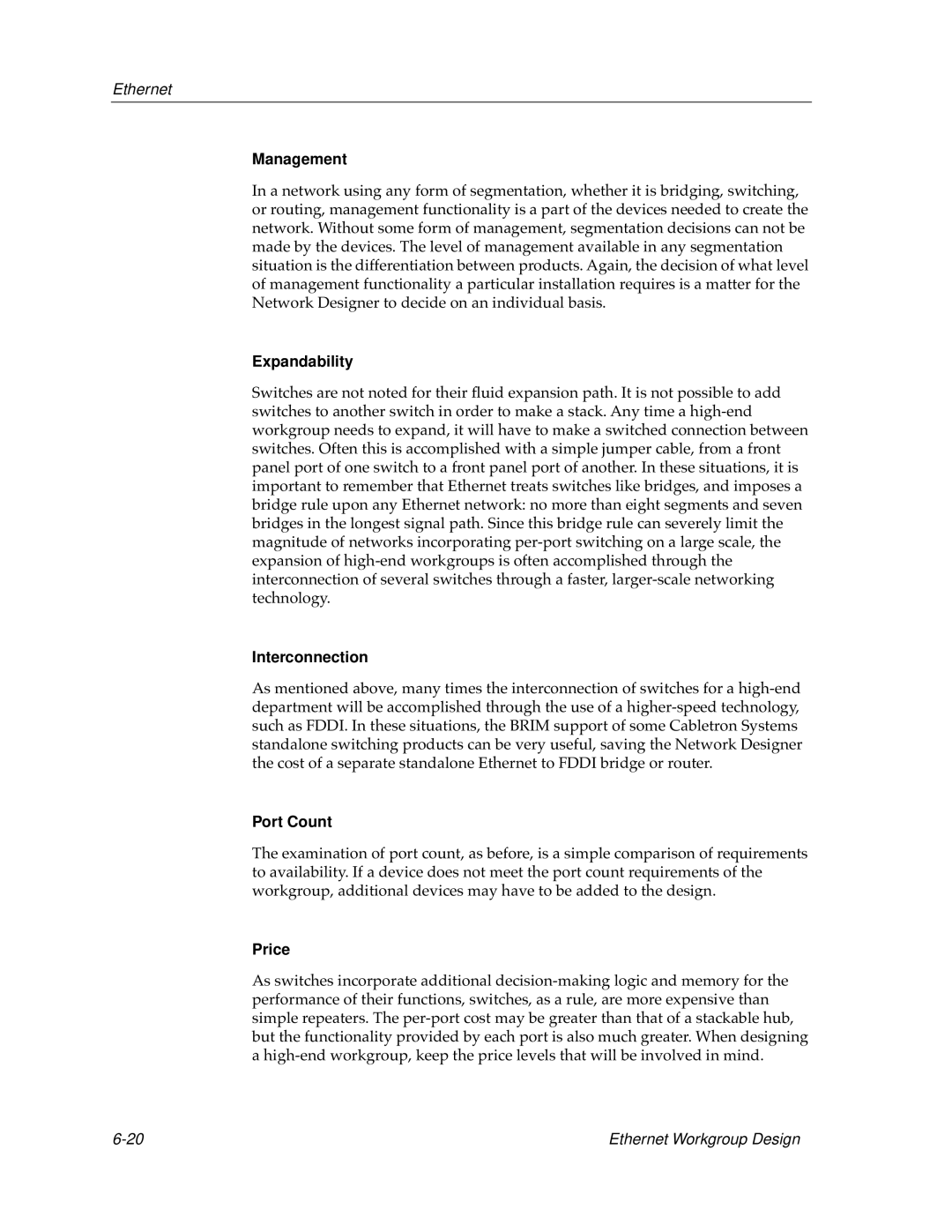Management
In a network using any form of segmentation, whether it is bridging, switching, or routing, management functionality is a part of the devices needed to create the network. Without some form of management, segmentation decisions can not be made by the devices. The level of management available in any segmentation situation is the differentiation between products. Again, the decision of what level of management functionality a particular installation requires is a matter for the Network Designer to decide on an individual basis.
Expandability
Switches are not noted for their fluid expansion path. It is not possible to add switches to another switch in order to make a stack. Any time a high-end workgroup needs to expand, it will have to make a switched connection between switches. Often this is accomplished with a simple jumper cable, from a front panel port of one switch to a front panel port of another. In these situations, it is important to remember that Ethernet treats switches like bridges, and imposes a bridge rule upon any Ethernet network: no more than eight segments and seven bridges in the longest signal path. Since this bridge rule can severely limit the magnitude of networks incorporating per-port switching on a large scale, the expansion of high-end workgroups is often accomplished through the interconnection of several switches through a faster, larger-scale networking technology.
Interconnection
As mentioned above, many times the interconnection of switches for a high-end department will be accomplished through the use of a higher-speed technology, such as FDDI. In these situations, the BRIM support of some Cabletron Systems standalone switching products can be very useful, saving the Network Designer the cost of a separate standalone Ethernet to FDDI bridge or router.
Port Count
The examination of port count, as before, is a simple comparison of requirements to availability. If a device does not meet the port count requirements of the workgroup, additional devices may have to be added to the design.
Price
As switches incorporate additional decision-making logic and memory for the performance of their functions, switches, as a rule, are more expensive than simple repeaters. The per-port cost may be greater than that of a stackable hub, but the functionality provided by each port is also much greater. When designing a high-end workgroup, keep the price levels that will be involved in mind.
